Everything You Need To Know About Becoming A Commercial Driver
At Driving Academy, we’ve been helped over 10,000 students get on the road to freedom. That’s why we’re bringing you the ultimate step by step guide for how to get your CDL license and become a truck driver.
This is a true master class in the subject of CDL. By the end of this guide, you’re going to have answers to all the questions you can think of. (And a few you haven’t thought of.)
So make sure you read all the way to the end to find out all the info you need to get started.
And if you still have questions about the CDL process, leave a comment below or give us a call to speak with one of our trucking school’s admission experts.
Why You Want To Become A Truck Driver

Becoming a truck driver is a great career choice if you’re looking for good pay, job security, and flexibility, all without needing a college degree.
The average CDL truck drivers make around $75,000 a year, which is much more than the average person without a college degree.
In some states like New York, New Jersey, and Florida, the pay is even higher!
With a few years of experience, you can become your own boss as an owner-operator and earn anywhere from $100,000 to over $300,000 a year.
The Average Truck Driver Makes Around $75,000 A Year
Compared to a degree that takes years and costs easily over $20,000, getting a CDL license is fast and much more affordable. You can get your commercial license in as little as 4 to 6 weeks!
There’s also a huge demand for drivers right now, with a shortage of over 60,000 truckers in the U.S. That means you’ll have no trouble finding work wherever you go.
Plus, truck driving gives you flexibility. If you love to travel, you can drive across the country and see new places. If you’d rather be home every night, you can stick to local routes. Whatever your lifestyle, there’s a good paying driving job that fits.
What Is A CDL License?
Before we actually talk about how to become a truck driver by getting a CDL license you should understand what a CDL license actually is.
C.D.L. stands for Commercial Driver’s License. This is a license that legally gives you the ability to earn money while driving.
A CDL vehicle is any commercial automobile over a certain size being driven on public roads. Many people think a CDL vehicle also needs air brakes, but that’s actually a misunderstanding.
The only thing that makes a vehicle a CDL or not is going to be the weight that it’s built to transport.
The History of CDLs
Before 1986 each state had their own laws and regulations about who was allowed to drive trucks and busses. The chaos caused confusion as for truckers crossing state lines as someone from one state wasn’t qualified to drive in another.
So in 1986 the Commercial Motor Vehicle Safety Act of 1986 was past in Washington DC to establish federal minimum requirements that must be met when a state issues a CDL.
3 Different Types Of CDL Licenses
The different types of CDL licenses sort of resemble your report card. You’re going to have A’s, you’re going to have B’s and you’re going to have C’s (hopefully your report card didn’t have any D’s.)
There are 3 types of licenses for commercial vehicles: CDL Class A, Class B and Class C.

CDL Class A license is for tractor-trailers or large vehicles that weigh over 26,000 lbs. and have a trailer that weighs and/or holds over 10,000 lbs.

CDL Class B is for box trucks, work trucks and buses. Class B vehicles weigh over 26,000 lbs. with/without a trailer, weighing less than 10,000 lbs.
Class A CDL
To drive a tractor-trailer or large semi-truck, you need a Class A commercial driver’s license – the highest CDL classification. It allows you to operate vehicles with a combined weight rating of 26,001 pounds or more, that are hauling a trailer with a fully loaded weight rating that’s over 10,000 pounds.
This license offers the most flexibility, qualifying drivers for jobs in long-haul trucking, freight transport, and heavy equipment hauling. It also allows you to drive any Class B vehicle (that doesn’t require a special endorsement like buses.)
Because it leads to better pay and broader job opportunities, the Class A CDL is the most popular choice among our students.
Types of Class A Vehicles
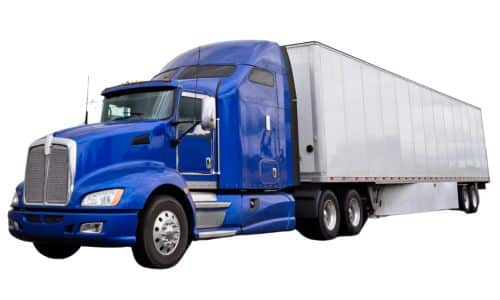
Tractor-Trailers
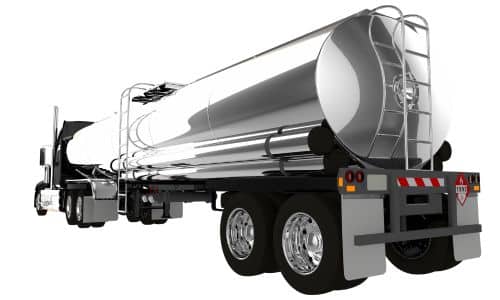
Tanker Trailers
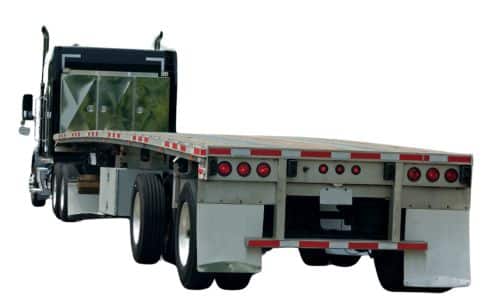
Flatbed Trailers
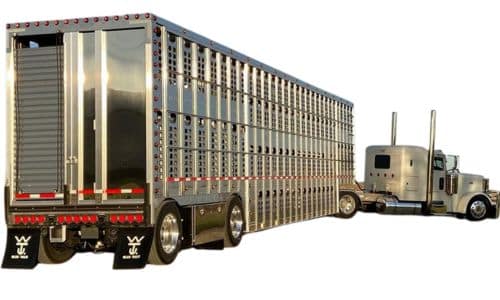
Livestock Carriers
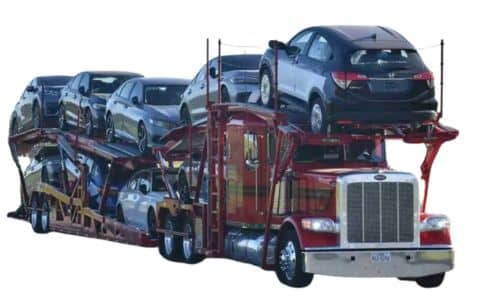
Car Transporters
Class B CDL
The next classification is the CDL Class B License. This allows you to operate any single vehicle on the road that weighs more than 26,000 lb. If it has a trailer attached, the trailer has to have a GCWR less than 10,000 lbs.
Class B vehicles include things like box trucks, vocational trucks (cement trucks, garbage trucks, etc…) and buses.
That said, if you want to drive a city bus or school bus, you’ll need to get a passenger endorsement along with the Class B license.
Types of Class B Vehicles
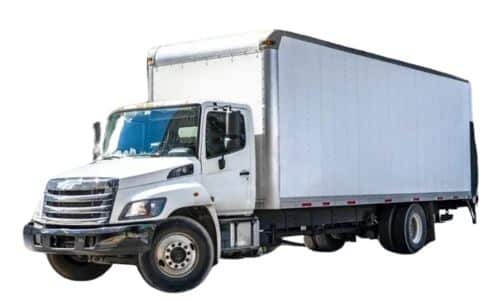
Box Truck
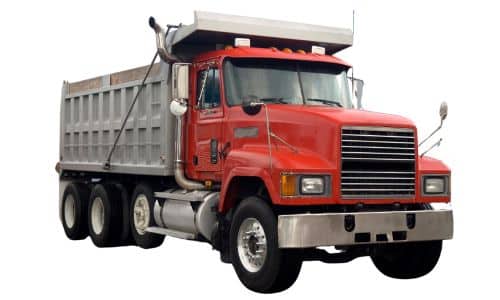
Dump Truck
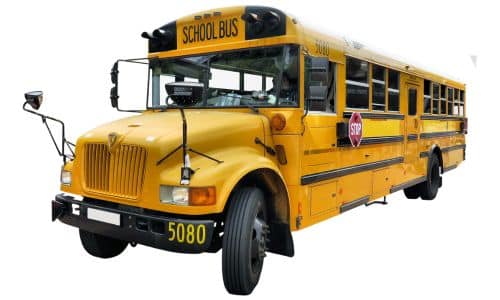
School Bus
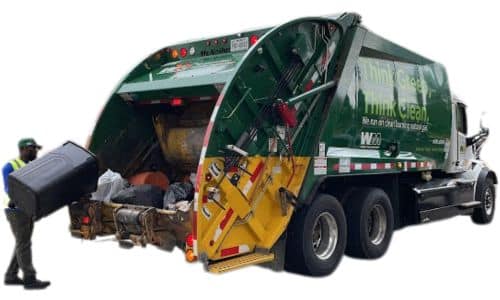
Garbage Truck
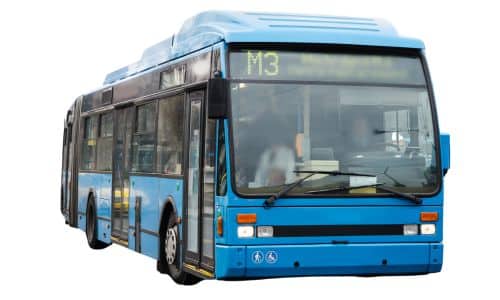
City Bus
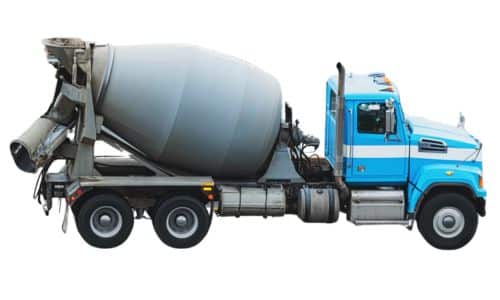
Cement Truck
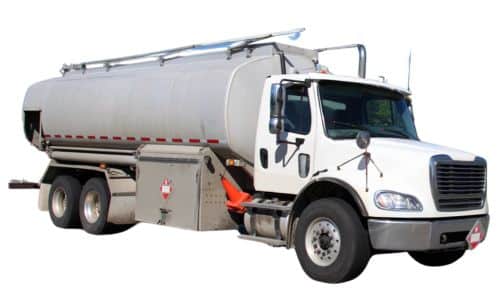
Tanker Truck
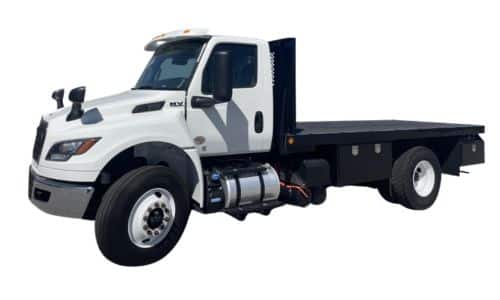
Flatbed
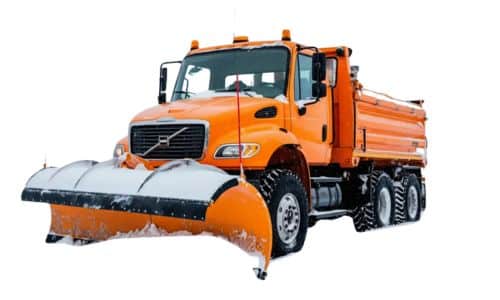
Snow Plow
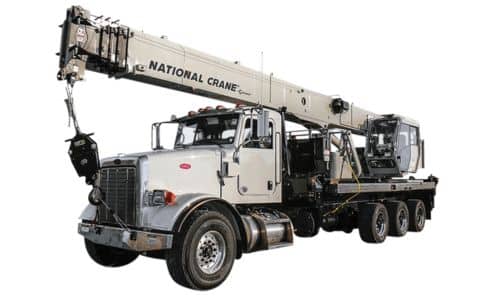
Crane
Class C CDL
The last classification one is going to be a CDL Class C license. A Class C is a commercial vehicle that weighs less than 26,000 lb. and can take 16 or more passengers (including yourself) or transporting hazardous materials.
Just getting a Class C CDL is going to limit yourself tremendously in the future. On top of that, the process of getting a Class C license is pretty much the same as getting a Class B, so you might as well just get a Class B so you have many more job opportunities.
Types of Class C Vehicles
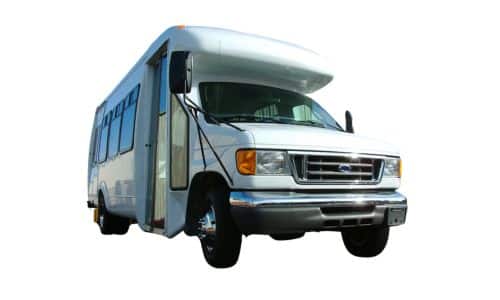
Shuttle Buses
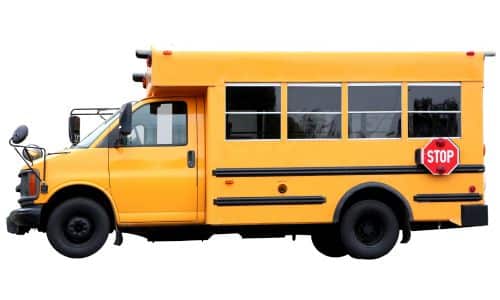
Small School Buses
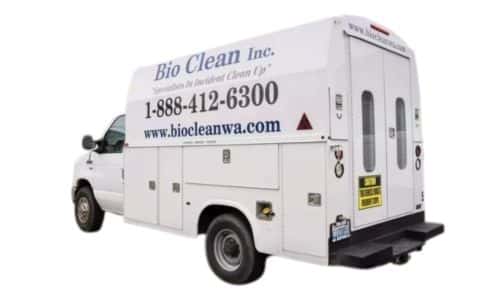
Hazardous Material Transport
What Are The Requirements To Get A CDL License?
So by this point you’ve read enough to know why you want to drive trucks for a living. But what are the requirements to get a CDL license? Are you even eligible?
These are the very basic requirements to get a CDL and become a certified truck driver
Have a valid driver’s license
Be at least 18 years old (21 to drive across state lines)
Be a US citizen or have a green card/work visa
Pass a DOT physical
Now because the trucking certification requirements are set by the federal government, every state is going to follow these eligibility standards. So whether you’re in New Jersey, Pennsylvania, California, Idaho or Texas, the minimum requirements to get a CDL are the same.
There might be a little bit of nuances in the qualifications from state to state, but if you get your CDL in one state, it’s valid in the other 49.
How To Get A CDL License
When it comes to the actual process for how to get a CDL license, there’s often a lot of confusion about what you actually need to do. So we’re going to break it down into three steps.
Step 1) Pass The CDL Permit / Knowledge Exams
Step 2) Complete ELDT Theory Course AND Behind-The-Wheel Training At A Licensed Truck Driving School
Step 3) Pass The CDL Skills & Road Test
CDL Permit
The first step to becoming a person who drives trucks for a living is to get your CDL permit.
The CDL permit process is just like when you were a teenager learning to drive. Before you could get your full driver’s license, you needed to pass the permit exams to earn a learner’s permit.
Getting your CDL permit, also known as a Commercial Learner’s Permit or CLP, requires you to take a knowledge test(s) to demonstrate that you have a basic understanding of driving a truck or bus.
CDL Permit Exams Are Also Called Knowledge Tests
With a CLP, you can practice driving a commercial vehicle on public roads as long as you are with someone that already has their Commercial Driver’s License, typically a CDL instructor.
How To Get Your Truck Driving Permit
- Decide what CDL class level you want and what endorsements you’ll be going for
- Study for your permit exams
- Make an appointment with the DMV to take the tests
- Take the exams and pass with 80%
- Your local DMV issues the permit
- Start your truck driver training at a CDL school
What Tests Do You Need To Take For The CDL Permit
You may have heard that there are 3 tests for the CDL permit. But it depends if you’re going for a Class A or Class B learner’s permit.
Everyone getting a CDL takes the General Knowledge exam. This test covers safe driving practices, vehicle inspection, accident procedures and transportation regulations. Basically everything you should know about driving a truck.
You’ll also take the Air Brakes exam. The CDL air brake test assesses your knowledge and practical skills related to air brake systems, covering topics like components, operation, inspection procedures, and safe usage
While it’s not technically required for getting your CDL permit, it is highly, highly, highly recommended that you complete the Air Brakes Permit Exam, as many heavy trucks use air brakes.
If you don’t pass the Air Brakes exam, you cannot train on a vehicle with air brakes, and you will have a restriction on your CDL license.
This will keep you from a majority of trucking jobs in the future.
For the Class A learner’s permit you’ll also take the Combination exam. This assesses your understanding of driving trucks with separate trailers.
CDL Class B students don’t need to take the Combination test because they won’t be driving a tractor-trailer combo.
| What it covers | # of Questions | CDL A Permit | CDL B Permit | |
|---|---|---|---|---|
| General Knowledge | Basic trucking concepts, safe driving & CDL regulations | 50 | ✔️ | ✔️ |
| Combination | Covers driving vehicles with a tractor-trailer combination | 20 | ✔️ | ❌ |
| Air Brakes | Focuses on vehicles equipped with air brakes | 25 | ✔️ | ✔️ |
CDL Endorsements
Commercial drivers who haul certain types of cargo or transport passengers must add “endorsements” to their CDL license. This shows they have specialized knowledge to operate these vehicles safely.
What Are The Endorsements You Can Get?
There are 6 truck driving endorsements that you can get on your license that allow you to legally transport different types of vehicles and cargo. They are:
| Endorsement | Purpose | Special Requirement | Knowledge Test |
|---|---|---|---|
| T - Double & Triple Trailer | Pulling 2 or 3 trailers. (Where legally allowed) | Class A license is required | ✔️ |
| P - Passenger | Buses or vehicles used to transport passengers. | Requires Road Test in a bus or passenger vehicle | ✔️ |
| S - School Bus | Transporting children in a bus | Requires "P" endorsement, background check & Road Test in a school bus | ✔️ |
| N - Tanker Vehicle | Transporting liquids or gas in a tanker | Just pass Knowledge Test | ✔️ |
| H - Hazardous Materials | Transporting hazardous materials |
Must be trained & retested every 2 years. Note: Federal Requirements | ✔️ |
| X - Combination Hazardous Materials & Tank Vehicles | Transporting hazardous materials in a tank | Earned automatically with both "H" & "N" Endorsements. |
Why Get CDL Endorsements?
Do you like making more money, and having more job opportunities anywhere you go? Of course you do! So you definitely want to get as many endorsements as you can.
On average, truck drivers with endorsements on their license earn $13,000 – $23,000 more per year than regular truck drivers.
How Do You Get A CDL Endorsement?
In order to get an endorsement all you have to do is pass a written exam. These endorsement tests show that you have a special knowledge of the problems and skills required to safely operate these specialty vehicles, cargo and trailers.
When you’re signing up to take your CDL permit tests, you also can choose to register for the knowledge tests for specific endorsements.
Hazardous Materials Endorsement
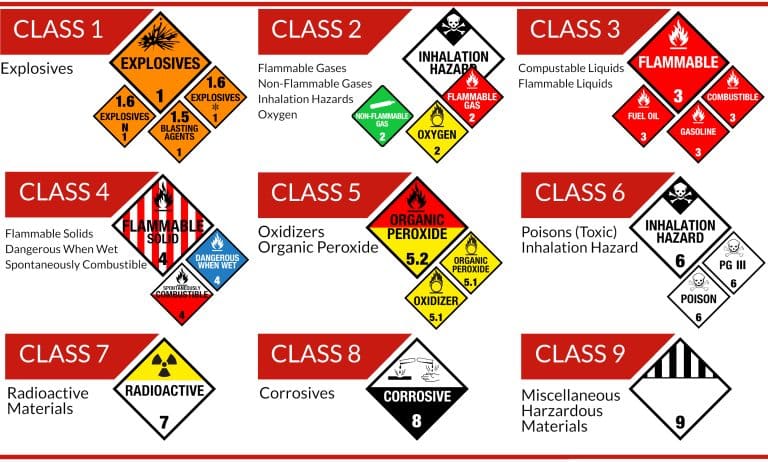
Getting a hazardous materials endorsement on your license requires a few more steps than the other endorsements. Because of the potentially toxic, corrosive or deadly materials you’ll be hauling, you’ll need to get a background check that includes a review of criminal, immigration and FBI records.
Hazardous Materials include:
- Gasoline
- Explosives
- Radioactive Materials
- Infectious Substances
- Propane
- Chlorine
- Acids & Corrosive Materials
If you are applying for a HAZMAT endorsement, you must complete the required Entry-Level Driver Training (ELDT) before taking your knowledge test.
Other CDL Endorsements
Some states have their own extra endorsement for licenses that are required to drive certain vehicles or haul specific cargo. Some examples include Metal Coil, Recreational Vehicles and Tow Truck endorsements.
If you don’t have a license from that state, you can still drive through it without needing an endorsement.
For example if you have a New Jersey license, you can transport metal coils into New York. But if you’re from NYC, you need the “M” endorsement to transport metal coils within New York State.
CDL Driver Training
Once you get your CDL permit, congratulations! It’s time for the second phase: Training!
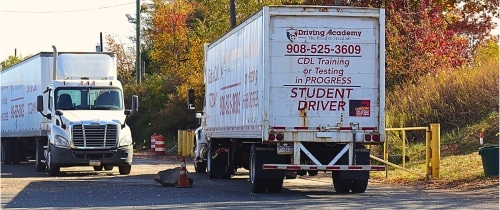
Now there are two parts to the truck drive training: ELDT Theory and Behind-The-Wheel. In order to take your road test, you’ll need to complete both portions of the training at a federally licensed CDL school like Driving Academy.
ELDT Theory
ELDT theory, which stands for Entry-Level Driver Training, is the curriculum required by the Federal Motor Carrier Safety Administration (FMCSA) for those looking to get their Commercial Driver’s License.The government wanted to make sure that everyone had a standard piece of knowledge because they understood that just because you passed your permit test doesn’t really mean that you learned everything that you needed to safely drive a truck or bus. So they mandated that every student take an ELDT theory course.This program covers all the things you need to know to drive on the road. It includes topics like operating your vehicle, backing and docking, driving at night, post crash procedures and a whole bunch more.There are no required minimum teaching hours for theory training,Because there isn’t a single format, it’s up to the schools to build a curriculum that gets approved by the FMCSA. This leeway with the program means the coursework can be done in a live classroom, online or through a collection of recorded videos.After completing the training you need to take another test to prove your knowledge. Yes that’s right, another exam.Unlike the permit and knowledge tests that must be done at the DMV, the ELDT exam can be taken anywhere.You need to get 80% of the test correct to pass. But if you don’t, all you have to do is just start the test over.Once you pass the ELDT theory exam you’re ready to rock and roll. You’re now up to the fun part, practicing on a real truck!
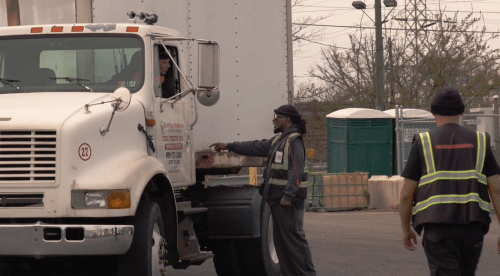
Behind-The-Wheel Training
The second part of training is actually getting to drive the truck. This Behind-The-Wheel training is done at a certified truck driving school like the Driving Academy.You might be thinking, “Hey, why do I even have to go to a trucking school? My uncle/brother/friend drives a truck. I can just learn with them to get my CDL.”…Nope.You Must Complete Behind-The-Wheel Training In-Person At A Licensed CDL School!According to § 380.609 of the Federal Code regarding entry-level driver training requirements:
“An individual who applies, for the first time, for a Class A or Class B CDL, or who upgrades to a Class A or B CDL, must complete driver training from a provider listed on the Training Provider Registry (TPR).”
This means that truck driver training can only be done by a licensed instructor at a federally approved school.
So, if you haven’t already, you’ve got to enroll at a CDL driving school like Driving Academy for yard training.
Yard Training
Your behind-the-wheel training will take place in a yard or lot, which is why it’s often referred to as yard training.
Yard training at a certified trucking school is a crucial part of a commercial driver’s license (CDL) training program.
Not only is it federally mandated but it takes place in a controlled environment (the “yard”) where students learn to safely operate and maneuver a truck before heading out on public roads.
This CDL yard training helps you become a truck driver by preparing you for the road test.
Different schools have different set ups, but a training yard typically consists of four sections that mirror the parts of the CDL road test.
Truck Yard Training
Pre-Trip Inspection
Where you practice the external inspection typically on a stationary truck
In-Cab Inspection / Air Brake Test
Where you practice the inside inspection on a truck that can move enough to do the tug test
Parking Maneuvers
Where you practice backing up and parking the truck
Road Driving
An instructor takes you out on the public road to practice driving and shifting gears
How Long Does Yard Training Take?
CDL yard training typically takes a few weeks, depending on the specific program, instructor and equipment availability, and the student’s abilities and progress. Most CDL schools offer programs that can be completed in 1 to 4 weeks.
CDL Skills Test (AKA The Road Test)
The final boss of the CDL process is the skills test.
The trucking driving skills test is often also referred to as the CDL road test or the CDL license exam.
Where Do I Take CDL The Road Test?
There are two places you can take the road test to earn your commercial driver’s license. Either at the DMV or at a Third Party Testing Site.
DMV |
3rd Party Testing Site | |
|---|---|---|
PROS |
|
|
Cons |
|
|
DMV
Taking the CDL road test at the DMV (or MVC as we call it in New Jersey) means you’ll complete your driving exam at a state-run testing facility.
You’ll need to bring the right type of vehicle for the class of CDL you’re testing for, along with all required documents.
Appointments are often needed, and wait times can take weeks or months depending on your state. And not every local DMV offers CDL road testing.

Third Party Testing Sites
Third-party testing sites for CDL road tests are places approved by the state where you can take your driving test outside of the DMV. These sites are often run by driving schools or trucking companies.
They can be a faster and more convenient option, especially if the DMV has long wait times. Another advantage is that you don’t need to bring your own truck or bus to test on.
Even though they’re not run by the state, they must follow the same rules to make sure the tests are fair and accurate.
Some states like New Jersey, don’t allow 3rd party sites. That’s why our testing site for the New Jersey CDL schools is located across the border in Pennsylvania.
CDL Driving Exam Sections
Just like your road test when you were getting your license to drive a regular car, you have to prove to a certified examiner that you know how to drive. But unlike the car road test, the trucking road test is split into three main sections.
1. Pre-Trip Inspection
2. Parking Maneuvers
3. On The Road Driving
These three different sections of the test are almost like playing a video game with different levels. Once you pass the section you move on to the next level.
In total, you can expect the CDL driving test to take around 2 to 2 ½ hours.
Pre-Trip Inspection
The first stage of the CDL road test is going to be the Pre-Trip Inspection. In this section you’re going to have to know how to inspect both the outside and then inside of the vehicle. This is an important skill because when you become a truck driver, you’ll need to know that your vehicle is safe to drive.
This section is probably the hardest part of the CDL exam.
On average this section takes about 1 hour to complete.
The Pre-Trip exam consists of two parts: Outside Inspection and In-Cab Inspection.
Outside Inspection
As you can guess, the outside part of the Pre-Trip consists of inspecting the outside of the truck or bus, plus what’s under the hood.
You must point to/touch and name the important parts of the vehicle. You then have to explain to the examiner using very specific wording, what you’re checking for and why.
This check includes things like the lights, tires, fluid levels, power steering system, mirrors, brake lines and more.
| How Many Parts Do You Need To Inspect? | ||
|---|---|---|
| All CDL Vehicles | Combination (Class A) | Passenger |
| 55 | 55+24=79 | 55+4=59 |
In-Cab Inspection
The In-Cab Inspection checks your knowledge of the vehicle’s safety features and ensures you know how to inspect the inside of the cab properly.
During this part of the CDL test, you’ll be expected to point out and explain key components such as gauges and indicator lights. You’ll also need to perform a Safe Start and Air Brake Test (for air brake vehicles.)
You’ll need to explain what you’re checking for and why it’s important. The examiner is looking for both your knowledge and attention to safety. Again you’ll need to use very specific wording.
Parking Maneuvers
The second stage of the CDL road test is the Parking Maneuvers. These are going to test your Basic Vehicle Control.
Now the specific parking maneuvers do change state by state, but in general you’ll be tested on 4-6 of these basic vehicle control operations:
In New Jersey you’ll just need to execute a Forward Stop, Straight Line Backing, Forward Offset and Reverse Offset. In California however, you’ll have to do all six of these maneuvers on both the driver and passenger sides.
In each of these maneuvers you’ll need to demonstrate your ability to control the truck or bus by guiding it into a defined area marked with traffic cones and painted lines.
If you miss or go over the lines, then you fail. It might seem unfair but in the real world, if you go over the line, then you’ve hit a car or building.
Road Test
The third and final section of the CDL is actually driving the truck on the road itself. This CDL road test is just like the road test you took to get your regular license.
Your examiner will tell you where to drive and put you in a variety of traffic situations. This would include:
- Left and Right Turns
- Intersections
- Railroad Crossings
- Up and Down grades
- Single and Multi-Lane Roads, Streets, and Highways
The main difference between the CDL road test and a regular car road test is that you’ll also need to point out signs like speed limits and bridge heights.
What Do You Do If You Pass Your Exams?
If you pass your CDL road test, CONGRATULATIONS!!!!!! YOU DID IT!!!!! You’re now a certified truck driver!!!!
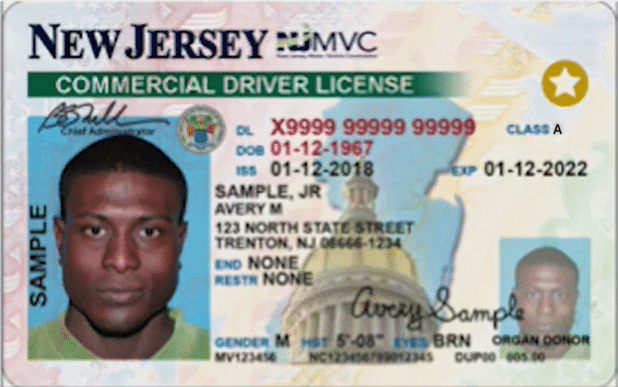
But there are still a few more things you need to do before you’re ready to hit the open road as a professional truck driver.
After you pass your road test, you’ll be issued a test receipt and a certificate of completion. With that receipt, you can visit your local DMV and officially obtain your CDL license.
Even if you took your CDL in a different state, you’ll return to your home state to pick up your CDL. Regardless of where you’re from, your CDL is now valid nationwide.
Many states will issue a temporary CDL (paper version) that you can use while waiting for the physical card to arrive by mail. The physical one will usually come within 7-30 days depending on the state you live in.
Instead of getting a separate CDL card, you’ll receive a new drivers license that replaces your regular id. This new one will say the class vehicle you can drive and lists your endorsements and restrictions.

Now that you have your CDL license, you’re ready to find your first truck driving job, and start on your Road to Freedom!
Frequently Asked Questions
Do You Need A High School Diploma Or GED To Get A CDL?
When it comes to driving a truck, you don't need to worry about a college degree or even a GED. We've had students come to our program who have no High School diplomas and we've had students who've graduated from Harvard. With a CDL license your future can shine as brightly as you want.
Who Issues A CDL License?
The actual license is going to be issued by your local state DMV or a similar state agency. Each state has its own DMV (or equivalent) that handles testing and issuing CDLs, but all states follow rules set by the Federal Motor Carrier Safety Administration (FMCSA).
The FMCSA mandates everything that's happening when it comes to CDL drivers in the USA. Since you’re taking part in business being done across state lines, there needs to be federal oversight to set the standards.
While the federal government sets the rules, the people who physically give you the license are going to be a part of state level agencies.
Can You Get A CDL Online?
With regards to the questions of online CDL training being legit, the answer is… sort of.
Regardless of where you live, you’ll need to take the federally mandated ELDT theory training. There is no requirement to take the course in person, so you are allowed to take this portion of the truck driver training online.
However, you still need to complete in person training on a real truck before you can take the road test.
Since most driving schools offer the ELDT training as part of their curriculum and you’ll need to go in person for the behind-the-wheel training, you might as well do the theory training there.
For those who would need to travel far to get to the classroom, it does make more sense to take online ELDT training. This way, they don’t need to commute back and forth as much.
Do You Need To Speak English To Get Your CDL?
It is true you need to speak English to become a truck driver.
However, you don't need to be a fluent English speaker to get your CDL
Some states do offer the CDL permit exam in Spanish or other language.
The Pre-Trip Inspection and Road Test do need to be done in English. But as long as you can speak some English, and go to a truck driving school like Driving Academy, you'll be able to pass the exam without a problem.
How Long Do I Have To Wait To Be Re-Tested If I Fail My Road Test?
It depends on the state but typically you must wait at least 14 days to be re-tested.
Can I Upgrade My CDL From Class B To Class A?
Yes, you can upgrade from a Class B to a Class A CDL.
In order to upgrade to a Class A license, you'll need to go through the CDL process again. Though this time you'll be able to skip a few steps.
You'll start by going to your local DMV and taking the Combination Knowledge Test. But that's the only exam, because you won't need to retake the General Knowledge exam.
After passing that you'll need to pass the ELDT Theory course.
You can then re-take the entire road test in a Class A vehicle.
You don't technically need to enroll for the Behind-The-Wheel training at a physical location. But if you don't attend a trucking school to practice driving a combination vehicle, there is a 99% chance you will fail the Parking Maneuvers and Road Test.
It's always better to start with a CDL A license because it will allow you to drive almost any Class B vehicle.

